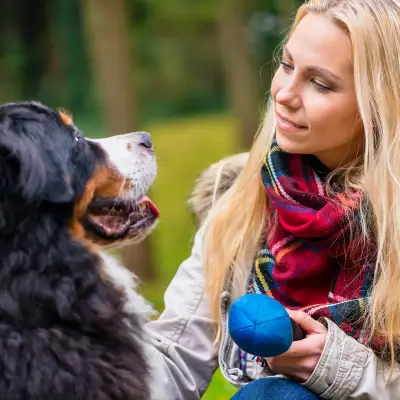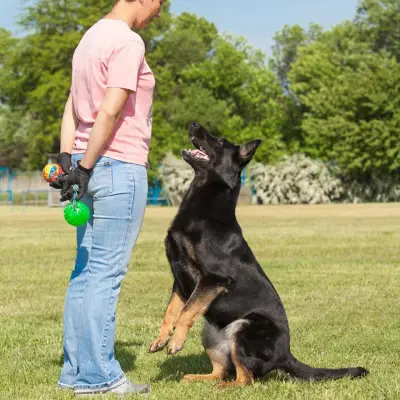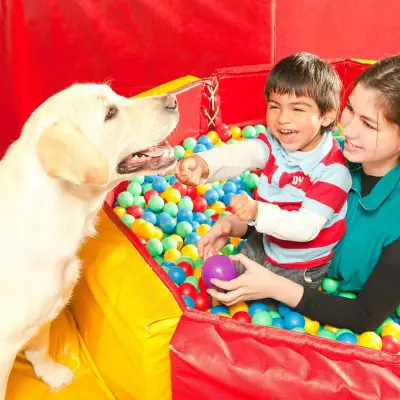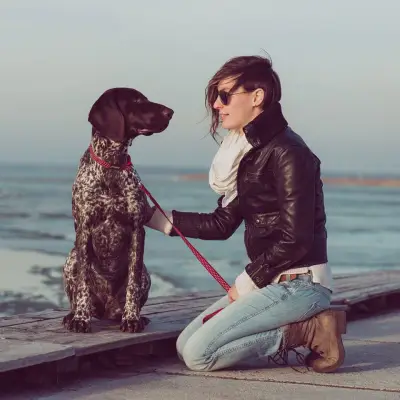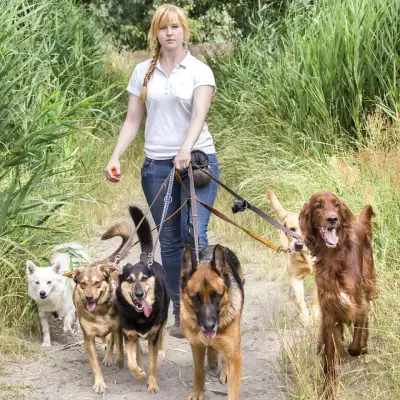Learning about dog body language can greatly enhance the bond between you and your furry friend. Dogs communicate their emotions, intentions, and needs through a fascinating array of signals and postures. By learning to interpret these cues, you can better understand and cater to your dog's well-being.
This guide aims to demystify canine body language, offering insights into dog language, dog posture meaning, and much more. Let's delve into the world of dog communication together, shedding light on how to read these signals effectively.
Jump to:
Why is it Important to Study Dog Body Language?
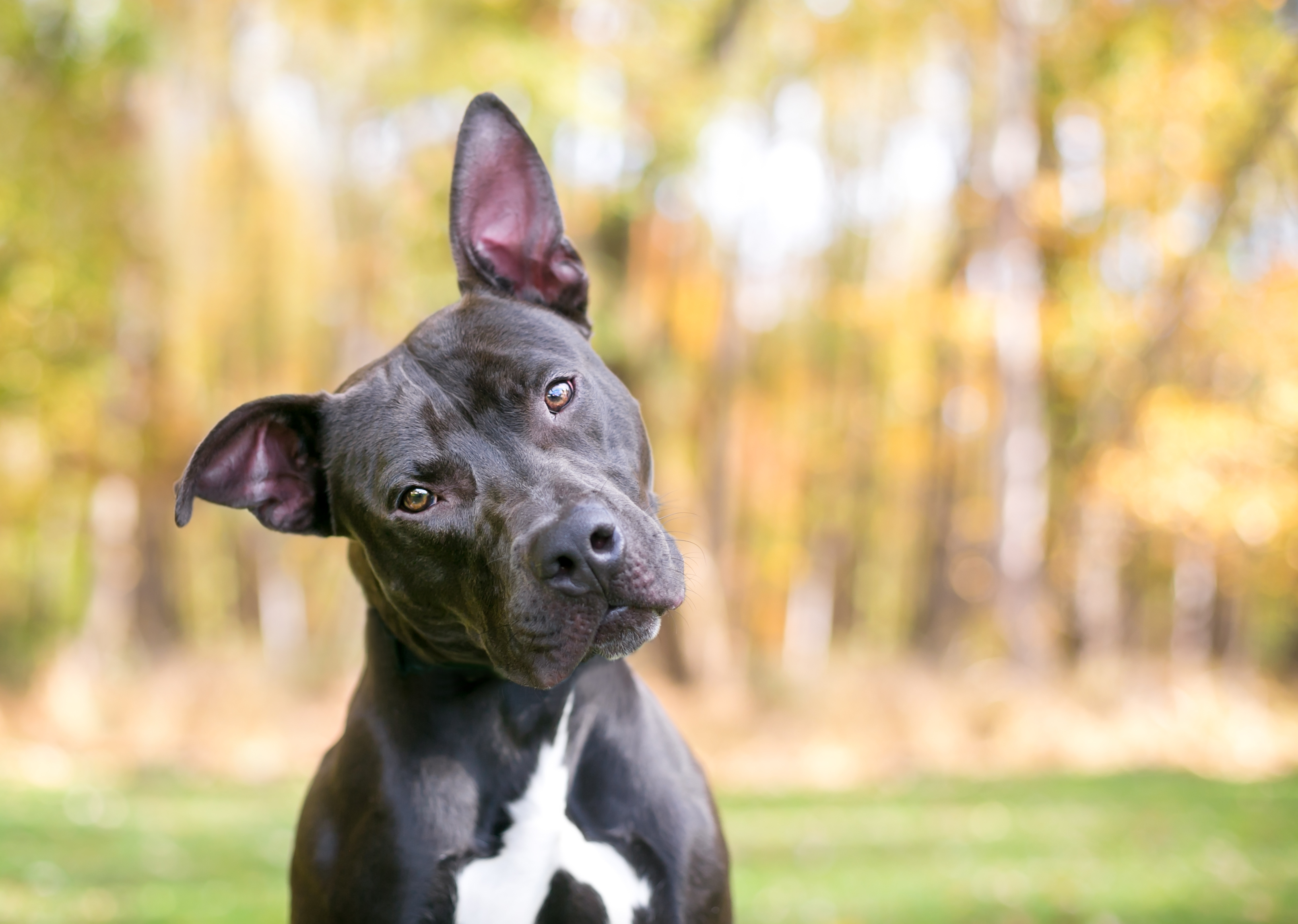
Understanding the intricacies of dog body language is an essential aspect of responsible pet ownership. This knowledge empowers you to foster a safer, more harmonious relationship between you and your dog, as well as between your dog and the wider world. Here are several compelling reasons why delving into canine body language is invaluable:
1. Enhances Bonding and Trust
Learning to read your dog's non-verbal cues allows you to respond more effectively to their needs and emotions. This attentiveness builds a deeper bond of trust and understanding between you and your pet, enhancing the quality of your shared life.
2. Prevents Miscommunication
Misinterpreting a dog's signals can lead to unnecessary stress, fear, or even aggression. By understanding what your dog is trying to communicate, you can avoid situations that might inadvertently cause discomfort or misunderstanding.
3. Improves Safety
Recognising the warning signs of fear or aggression in dogs can prevent potential incidents before they escalate. This awareness is important for the safety of your family and the community at large. Knowledge of dog body language helps you identify situations that could lead to bites or fights, allowing for timely intervention.
4. Supports Effective Training
Training becomes more effective when you understand your dog's responses and adjust your methods accordingly. Recognising signs of confusion, frustration, or anxiety allows you to adapt your training strategies, making learning a positive experience for your dog.
5. Identifies Health Issues
Changes in body language can sometimes indicate health problems. A dog in pain might show subtle signs of distress that are easily overlooked without a keen understanding of canine body language. Early detection of these signs can lead to timely medical intervention.
6. Fosters a Culture of Empathy and Respect
By promoting the study of dog body language, you encourage a culture of empathy and respect towards animals. This knowledge equips people to interact with dogs in a manner that acknowledges their feelings and well-being, fostering a more compassionate community for all.
7. Contributes to Emotional Well-being
Dogs are highly social animals, and their emotional well-being is closely tied to their interactions with humans and other dogs. Understanding and appropriately responding to your dog's emotional states can significantly impact their happiness and stress levels, promoting a healthier and more contented pet.
Canine Body Language: Key Signals to Observe
Dogs communicate a rich tapestry of emotions and intentions through their body language. Every part of a dog's body, from the wag of their tail to the position of their ears, plays a role in this intricate language. Understanding these signals can significantly enhance your relationship with your dog, providing insights into their feelings and overall well-being.
- Tail Wagging: Often misconstrued as a mere sign of happiness, the way a dog wags its tail can actually tell a border story. A tail wagging energetically at a high level might indicate excitement or a state of alertness, showing that the dog is fully engaged with their environment. Conversely, a tail positioned lower, wagging slowly, can be a sign of insecurity or uncertainty. The movement of a dog's tail, in conjunction with other body language signals, can offer a window into their emotional state.
- Ear Positions: The positioning of a dog's ears is another indicator of their mood and intentions. Ears perked forward can suggest keen interest or, in some cases, aggression, depending on the situation and accompanying body language. On the other hand, ears that are pinned back against the head might denote fear, submission, or a friendly overture, signalling the dog's discomfort or desire to appease.
- Eye Contact: The way a dog uses eye contact can vary significantly in meaning. Direct, steady eye contact may be a display of confidence or a challenge, potentially signalling aggression if accompanied by other threatening body language. Avoiding eye contact, however, can be a sign of submission or discomfort, indicating that the dog is trying to de-escalate a situation or express their unease.
- Mouth and Facial Expressions: A dog's mouth and facial expressions can convey a range of emotions. A relaxed, slightly open mouth, often with a lolling tongue, can indicate that a dog is content and at ease. Conversely, a closed mouth with tense facial muscles may signal anxiety, stress, or fear. Observing these subtle changes can provide clues to a dog's emotional state and help you respond more empathetically to their needs.
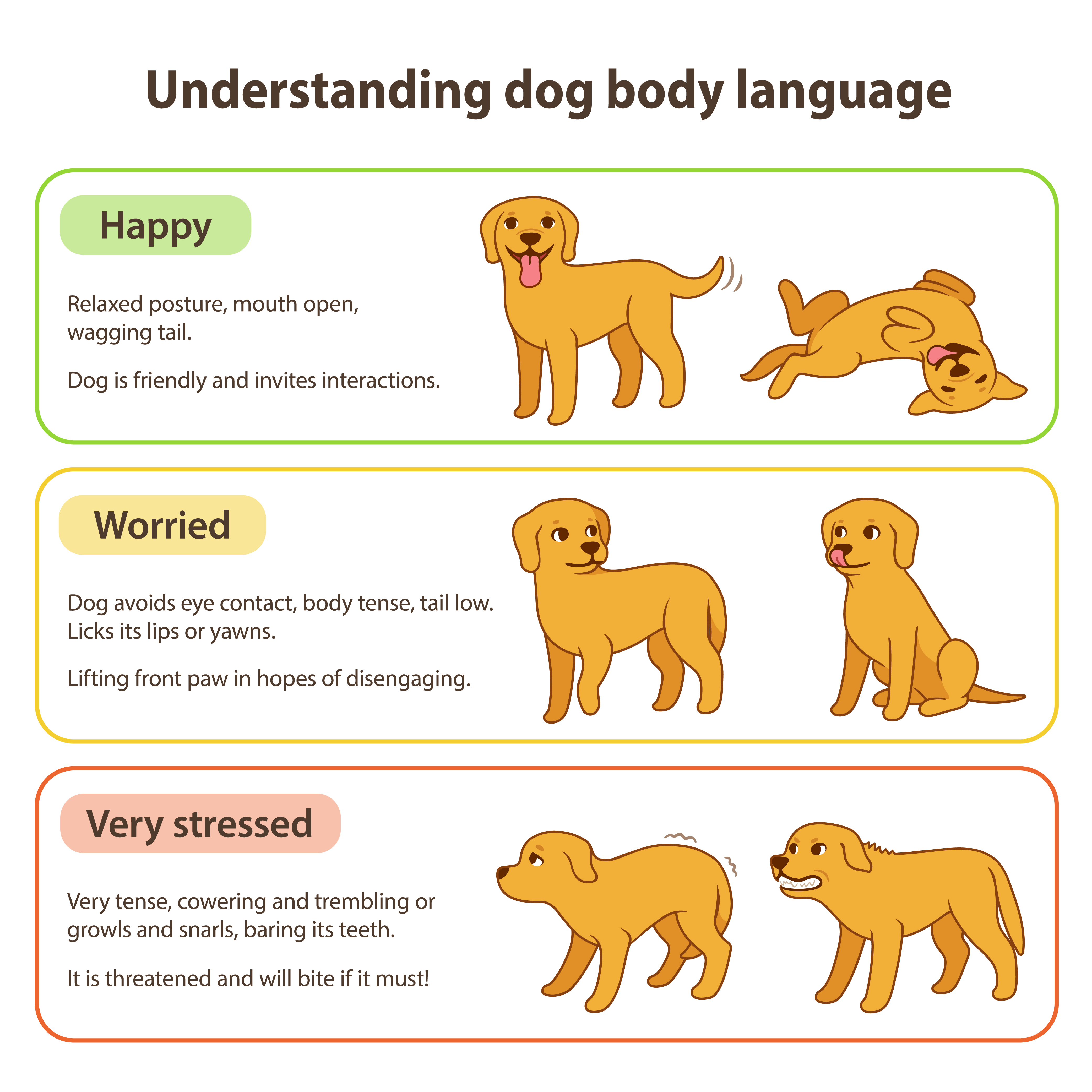
Understanding Dog Postures
- Play Bow: This posture, where a dog lowers their front end while keeping the back end up, is a universal sign of playfulness. It's an invitation to engage in play, signalling that any actions following this gesture are meant in good spirits. Recognising this posture can help you understand when your dog is in a playful mood and ready to interact.
- Stiffening and Staring: A dog that suddenly stiffens and stares may be signalling discomfort or anxiety about a person, another dog, or a situation. This body language serves as a warning that the dog might react defensively if their concern is not addressed. It's crucial to take note of these signs early to prevent any escalation of tension.
- Rolling Over: Exposing the belly is a complex signal that can mean different things depending on the context. In a relaxed, safe environment, rolling over is a sign of submission and trust, showing that the dog feels comfortable enough to expose their most vulnerable area. However, in a tense situation, this posture can also indicate fear and an attempt to appease a perceived threat.
Signs of Stress in Dogs
Recognising the signs of stress in dogs is essential for ensuring their comfort and well-being. Stressful situations can lead to a range of behaviours including:
- Pacing or Shaking: Indicative of nervousness or anxiety, pacing or shaking is a clear sign that a dog is not at ease with their current situation.
- Whining or Barking: Vocalisations such as whining or barking can express distress, attention-seeking, or discomfort.
- Yawning, Drooling, or Licking: These signs, often overlooked, can indicate stress, especially when they occur outside of eating or sleeping contexts.
- Avoidance or Hiding: A dog seeking solitude or physically removing themselves from a situation is a clear indicator of stress or fear.
Understanding Fawning Behavior and Fear Responses
Fawning behaviour, such as licking another dog's face or a person's hand, can express affection, submission, or anxiety, depending on the context. It's a dog's way of showing respect or attempting to soothe a tense situation.
Recognising the four fear responses—fight, flight, freeze, and fawn—is crucial for understanding and responding appropriately to a dog's stress or fear. These responses can manifest in various ways:
- Fight: Aggressive behaviour as a defensive reaction.
- Flight: Running away or attempting to escape a threatening situation.
- Freeze: Remaining motionless in the hope of avoiding confrontation.
- Fawn: Appeasing behaviors to mitigate conflict.

Frequently Asked Questions on Dog Body Language
How can I tell if my dog is overstimulated or too excited?
Overstimulation in dogs can manifest through frantic movements, excessive barking, jumping, panting, or even nipping. You might notice your dog becoming more reactive to stimuli that they would typically ignore. An overstimulated dog may have difficulty focusing on commands or calming down.
What does it mean when a dog 'bows' to me, not in play?
If a dog bows outside of a play context, often referred to as a "greeting stretch," it can be a sign of respect and affection. This gesture, similar to the play bow but more subdued, indicates that the dog is comfortable and happy to see you. It's a positive sign of trust and bonding.
My dog frequently 'huffs' or 'puffs' out air through their nose. What does this signal?
This huffing or puffing action can be a form of self-soothing or a way to relieve mild frustration. Dogs might exhibit this behaviour when they're unsure about a situation or if they're being asked to do something they're not entirely keen on but not overly stressed about.
Can a dog's sleeping position tell you about their mood or health?
A dog's sleeping position can offer insights into their comfort level and, to some extent, their health. Dogs that sleep curled up are often trying to conserve body heat and protect their vital organs, a sign they might be feeling cold or insecure. Those sleeping on their sides or sprawled out on their backs are usually feeling quite safe and relaxed. Persistent changes in sleeping positions, especially if a dog seems to be protecting a particular part of their body, could indicate discomfort or health issues.
How do dogs use their whiskers to communicate?
While not a direct form of communication, dogs' whiskers are highly sensitive and can indicate how a dog is interpreting their immediate environment. Whiskers that are pushed forward might indicate curiosity as the dog is actively engaging with their surroundings. If the whiskers are pulled back against the face, it could signal fear or aggression, as the dog is trying to protect these sensitive receptors.
What does it mean when a dog leans against you?
When a dog leans against you, it's often a sign of affection, trust, or seeking comfort and reassurance. Some dogs also lean to assert dominance or control over their owner, which is more common in dogs with confident personalities. Understanding the context and your dog's overall body language will help clarify their intent.
How do dogs communicate with other dogs using body language?
Dogs have a rich vocabulary of body language signals they use exclusively with other dogs, including play gestures, calming signals like averting the gaze or licking their nose, and dominance displays such as standing tall with ears and tail up. Submissive dogs may lower their body, avoid eye contact, or expose their belly to signal they are not a threat.
Recommended for you!
Best SellersLearn the Language of Dogs with Centre of Excellence
Our Canine Communication Diploma Course offers a comprehensive exploration into the world of dog body language, aiming to enhance the way you interact and bond with dogs.
Why Centre of Excellence?
- Accessibility for All: We believe in making education accessible to everyone. Our courses are priced affordably to ensure that learning is within reach for all.
- Learn at Your Own Pace: Our courses are designed with your convenience in mind, allowing you to learn at your own pace. This flexibility ensures that you can fit your learning around your schedule, balancing personal and professional commitments with ease.
- Diverse Learning Materials: Our curriculum spans a broad range of topics related to canine communication, catering to a variety of interests and educational needs. Whether you're a pet owner, a dog professional, or simply a dog lover, our course material is tailored to provide valuable insights and knowledge.
- Personalised Support: Enrolling in our courses means gaining access to dedicated tutor support and joining a vibrant community of like-minded learners. This support network is invaluable in guiding you through your educational journey and enhancing your learning experience.
Special Offer
We are delighted to offer you the opportunity to enrol in our Canine Communication Diploma Course at a special discounted price of £29, saving you over £100!

